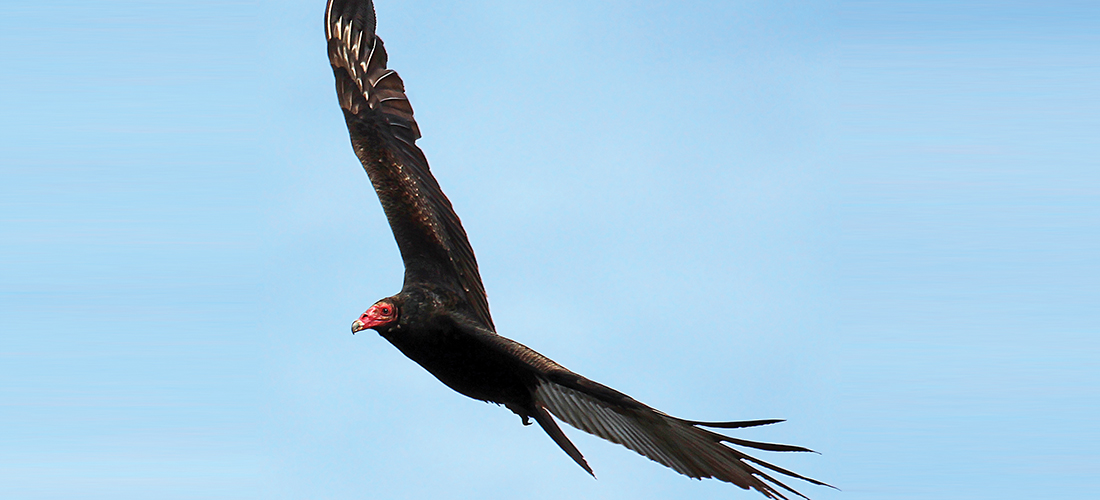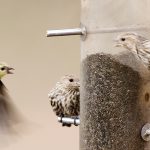
Turkey vultures are the ultimate scavengers
By Susan Campbell
There! By the edge of the road: It’s a big, dark bird. It looks sort of like it a wild turkey. But is it? Its head and face are red. It has a pale, hooked bill and a feathery neck. But the tail is the tip-off — it’s short. Definitely not the right look for a turkey — but perfect for a turkey vulture! (Feel free to call it a buzzard — or a “TV” by those in the know.)
The confusion is understandable since wild turkeys have made quite a comeback in Piedmont North Carolina. In fact, turkey vultures and turkeys can occasionally be seen sitting near one another in farm fields where they both can find food or just take advantage of the warmth of the dark ground on cool mornings.
However, turkey vultures are far more likely to be seen soaring overhead or perhaps perched high in a dead tree or cell tower. These birds have an unmistakable appearance in the air, forming a deep V-shape as they soar through the air, sometimes for literally hours on end. They’re easy to spot with their very large wingspans. At the very end of their wings look for their distinctive finger-like primary feathers. The tail serves as a rudder, allowing the bird to navigate effortlessly as it is lifted and transported by thermals and other currents high above the ground.
It is from this lofty vantage that turkey vultures travel in search of their next meal. Although their vision is poor, their sense of smell is keen. They can detect the aroma of a dead animal a mile or more away. They soar in circles, moving across the landscape with wings outstretched, sniffing all the while until a familiar odor catches their attention.
Turkey vultures are most likely to feed on dead mammals but they will not hesitate to eat the remains of a variety of foods including other birds, reptiles and even fish. They prefer freshly dead foods but may have to wait to get through the thick hide of larger animals if there is no wound or soft tissue allowing access. Toothed scavengers such as coyotes may literally need to provide that opportunity. Once vultures can get to flesh, they are quick to devour their food. Without plumage on their heads, there are no feathers to become soiled as they reach into larger carcasses for the morsels deep inside.
Our summering turkey vultures perform elaborate courtship flights in early spring. One will lead the other through a series of twists, turns and flaps as they pair up. As unattractive as vultures seem to us, they are good parents. Nests are well-hidden in hollow stumps or piles of debris, in old hawk or heron nests or even abandoned buildings. They seek out cooler spots that are well away from human activity in order to protect their blind, naked and defenseless young.
Vulture populations are increasing across North Carolina — probably due to human activity. Roadways create feeding opportunities year-round. Landfills also present easy feeding opportunities as well, believe it or not. During the winter months turkey vultures from the north migrate south, often concentrating in one area. Their large roosts can be problematic. A hundred or more large birds pouring into a stand of mature pines or loitering on a water tower does not go unnoticed.
But most people take turkey vultures for granted or don’t even notice them. In reality, they are unparalleled scavengers — especially given the increase in roadways and the inevitable roadkill that has resulted. PS
Susan would love to receive your wildlife sightings and photographs at susan@ncaves.com.





